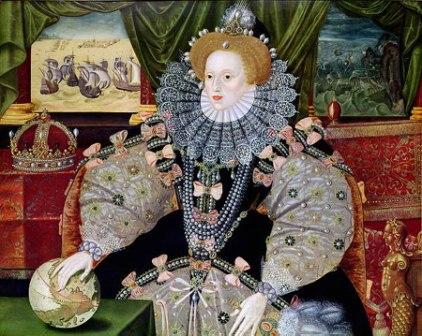 |
A portrait of Sir Francis Walsingham by John de Critz, circa 1597. Image public domain through Creative Commons licensing, NPG, London.
|
On this day in Elizabethan history in 1573, Queen Elizabeth I appointed Sir Francis Walsingham as her principal secretary. Though he was a competent statesman, Walsingham's true calling was intelligence and espionage. Through a combination of diplomacy and the use of informants and spies, Walsingham and his men managed to keep Queen Elizabeth safe from several assassination plots.
Walsingham's finest hour was also to be his most controversial: exposing Mary Stuart's approval and support of the well-organized Babington Plot. Anthony Babington and his co-conspirators sought to have Elizabeth I deposed and killed, and then liberate the imprisoned Queen of Scots and place her on the English throne. Mary Stuart, with the help of Philip II, would restore Catholicism in England and bring the country back under papal influence. Walsingham's methods for obtaining proof of Mary Stuart's guilt may be considered entrapment by modern standards, but
the fact remains that Mary did give her consent in no uncertain terms.
 |
| The Babington letter. Photo courtesy of by Barb Alexander, the Tudor Tutor. |
 |
| The cipher code used by Mary Stuart, Queen of Scots, to correspond with Anthony Babington and, unknowingly, Walsingham and his men. UK National Archives. |
Mary Stuart, the former Queen of Scots, was executed for her crimes at Fotheringay on Febrary 8th, 1587. Walsingham served as Queen Elizabeth I's secretary in an official capacity, and her "spymaster" in an unofficial capacity, until his death on April 6th in 1590.
For further reading, we recommend:
Her Majesty's Spymaster: Elizabeth I, Sir Francis Walsingham, and the Birth of Modern Espionage by Stephen Budiansky.
The Watchers: A Secret History of the Reign of Elizabeth I by Stephen Alford
Also, to learn more about Sir Francis Walsingham and his family, please visit our Walsingham Family board on Pinterest.







